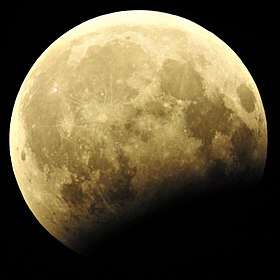June 2010 lunar eclipse
The partial lunar eclipse of June 26, 2010 was the first of two lunar eclipses in 2010. At maximum eclipse 53.7% of the moon was covered by the earth's shadow.[1]
| Partial eclipse | |||||||||||||
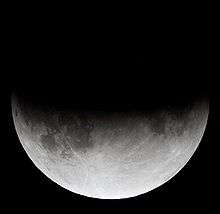 Near greatest eclipse from Canberra, Australia, at 11:31 UTC | |||||||||||||
| Date | 26 June 2010 | ||||||||||||
|---|---|---|---|---|---|---|---|---|---|---|---|---|---|
| Gamma | -0.7091 | ||||||||||||
| Magnitude | 0.5368 | ||||||||||||
| Saros cycle | 120 (58 of 84) | ||||||||||||
| Partiality | 162 minutes, 53 seconds | ||||||||||||
| Penumbral | 322 minutes, 13 seconds | ||||||||||||
| |||||||||||||
This eclipse preceded by two weeks the total Solar eclipse of July 11, 2010 over the South Pacific.
The next total lunar eclipse, visible over North and South America, occurred six months later, on December 21, 2010.
This lunar eclipse was during the 2010 FIFA World Cup.
This eclipse is a part of Lunar Saros 120 series, repeating every 18 years and 10 days, last occurring on June 15, 1992, and will next repeat on July 6, 2028. This series is winding down: The final total eclipse of this series was on May 14, 1938 and the final partial lunar eclipse will be on July 28, 2064.
Visibility

The entire umbral phase was visible after sunset Saturday evening throughout the Pacific, New Zealand, Australia, the Philippines and Japan. The point where the moon was directly overhead at maximum eclipse lay over the South Pacific Ocean, far to the southwest of Hawaii. The lunar eclipse seen over the Philippines on Saturday evening despite of rainshowers and thick clouds, but it clearly visible throughout the night sky.
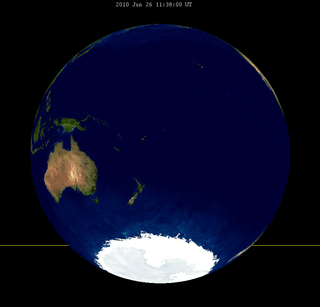 This simulation shows the view of the earth from the moon from the center of the earth at greatest eclipse. |
Map
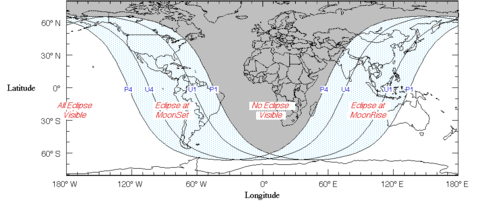
It was seen before sunrise on Saturday morning setting over western North and South America:
| Event | PDT (UTC-7) |
MDT (UTC-6) |
CDT (UTC-5) |
EDT (UTC-4) |
UTC |
|---|---|---|---|---|---|
| Start penumbral (P1) | 1:57 a.m. | 2:57 a.m. | 3:57 a.m. | 4:57 a.m. | 8:57 a.m. |
| Start umbral (U1) | 3:17 a.m. | 4:17 a.m. | 5:17 a.m. | 6:17 a.m. | 10:17 a.m. |
| Greatest eclipse | 4:38 a.m. | 5:38 a.m. | Set | Set | 11:38 a.m. |
| End umbral (U4) | Set | Set | Set | Set | 1:00 p.m. |
| End penumbral (P4) | Set | Set | Set | Set | 2:20 p.m. |
Photo gallery
Australia
 Simulated appearance during greatest eclipse at 11:38 UTC (South down)
Simulated appearance during greatest eclipse at 11:38 UTC (South down) From Hobart, Australia
From Hobart, Australia
11:09 UTC
America
 Early eclipse from Buenos Aires, Argentina
Early eclipse from Buenos Aires, Argentina
10:29 UTC Animation from California
Animation from California
Related eclipses
Eclipses of 2010
Lunar year (354 days)
This eclipse is the one of five lunar eclipses in a short-lived series. The lunar year series repeats after 12 lunations or 354 days (Shifting back about 10 days in sequential years). Because of the date shift, the Earth's shadow will be about 11 degrees west in sequential events.
| Lunar eclipse series sets from 2009–2013 | ||||||||
|---|---|---|---|---|---|---|---|---|
| Ascending node | Descending node | |||||||
| Saros # Photo |
Date Viewing |
Type chart |
Gamma | Saros # Photo |
Date Viewing |
Type chart |
Gamma | |
| 110 | 2009 Jul 07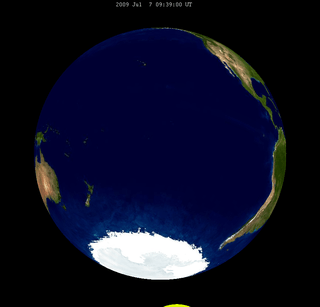 |
penumbral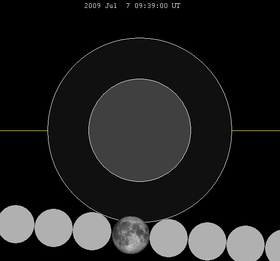 |
-1.4916 | 115 |
2009 Dec 31 |
partial |
0.9766 | |
120 |
2010 Jun 26 |
partial |
-0.7091 | 125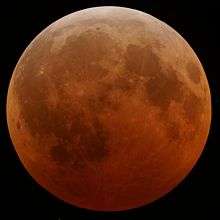 |
2010 Dec 21 |
total |
0.3214 | |
130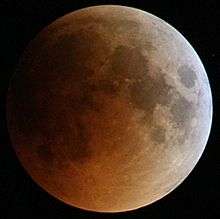 |
2011 Jun 15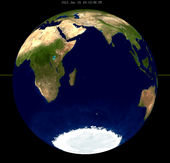 |
total |
0.0897 | 135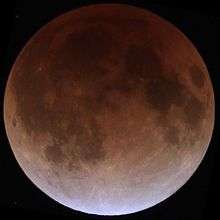 |
2011 Dec 10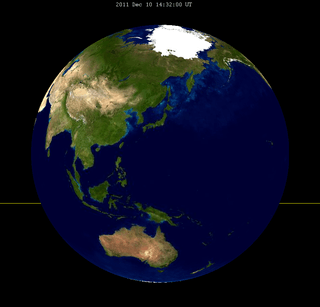 |
total |
-0.3882 | |
140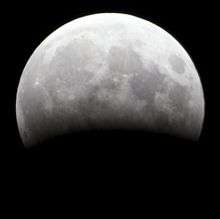 |
2012 Jun 04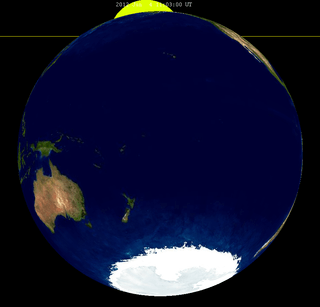 |
partial |
0.8248 | 145 | 2012 Nov 28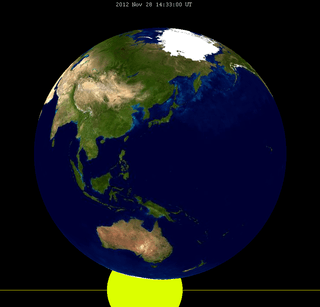 |
penumbral |
-1.0869 | |
| 150 | 2013 May 25 |
penumbral |
1.5351 | |||||
| Last set | 2009 Aug 06 | Last set | 2009 Feb 9 | |||||
| Next set | 2013 Apr 25 | Next set | 2013 Oct 18 | |||||
Metonic series (19 years)
The Metonic cycle repeats nearly exactly every 19 years and represents a Saros cycle plus one lunar year. Because it occurs on the same calendar date, the earth's shadow will be in nearly the same location relative to the background stars.
| Ascending node | Descending node |
|---|---|
|
|
 |
 |
Half-Saros cycle
A lunar eclipse will be preceded and followed by solar eclipses by 9 years and 5.5 days (a half saros).[2] This lunar eclipse is related to two total solar eclipses of Solar Saros 127.
| June 21, 2001 | July 2, 2019 |
|---|---|
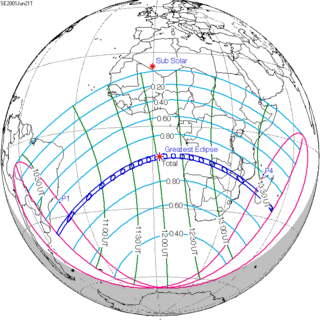 |
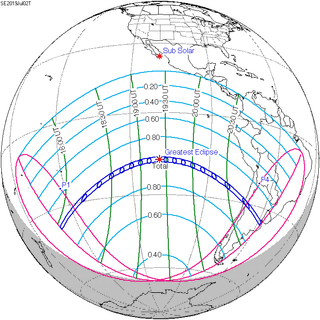 |
See also
- List of lunar eclipses and List of 21st-century lunar eclipses
Notes
- SPACE.com: Partial Lunar Eclipse Coming On June 26
- Mathematical Astronomy Morsels, Jean Meeus, p.110, Chapter 18, The half-saros
External links
| Wikimedia Commons has media related to Lunar eclipse of 2010 June 26. |
- 2010 Jun 26 chart: Eclipse Predictions by Fred Espenak, NASA/GSFC
- Hermit eclipse: 2010-06-26
- www.timeanddate.com: Partial Lunar Eclipse on June 26, 2010
- www.shadowandsubstance.com: Flash animation
Photos:
